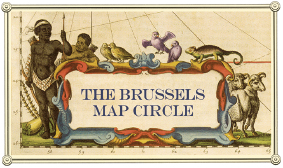(online) Typologies of East Asian Maps in a Global Perspective
–Hamburg, Germany
The extant research literature tends to distinguish between two major mapping traditions: ‘Western and scientific’ (i.e. based on advanced techniques of cartographic survey) and ‘Chinese and traditional’ (i.e. stemming from autochtonous cartography). The major drawback of this distinction is that it ignores the multifarious character of the Chinese cartographic tradition, which has at least two major sub-traditions. Following the pioneering studies of the recognised American-Taiwanese geographer Hsu Mei-ling 徐美玲 (1932–2009), Cordell Yee, author of the latest reference study of the history of Chinese cartography (1994), labelled them as ‘analytical/mathematical’ versus ‘descriptive’. The tentative character of these distinctions calls attention to the urgent necessity to clarify the criteria of classifying East Asian maps.
We propose to re-evaluate these distinctions and to consider other classifications of East Asian maps in the context of the global history of cartography. In particular, we would like to further develop the approach initiated by Joseph Needham and Wang Ling 王鈴 (1959), who systematically investigated Chinese maps in comparison with other cartographical traditions. This global approach has since been pushed back by a tendency to narrow specialisation in map studies; in the case of East Asian maps, the complexity of sinographic writing reinforces this tendency to take isolated views.
Diversity of cartographic traditions is not unique to East Asia. For instance, the history of European cartography distinguishes between mappaemundi relying on the Biblical conceptions of terrestrial space, and two incompatible traditions of ‘scientific cartography’ – maps rooted in Ptolemaic geography and early modern nautical charts (Gaspar Alves and Leitão, 2019). The interesting difference between East Asian and European cartography is that while mappaemundi and the early modern charts gradually left the cartographic scene, pre-modern types of East Asian maps continued to be produced and reproduced well up to the twentieth century.
